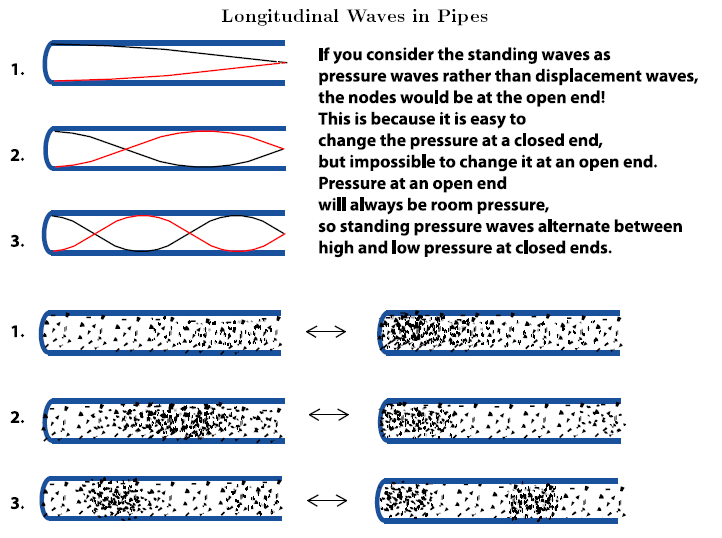The string disturbs the air molecules around it as it vibrates, producing sound waves in the air. But another great container for standing waves actually holds standing waves of air inside a long, narrow tube. This type of instrument is called an aerophone, and the most well-known of this type of instrument are often called wind instruments because, although the instrument itself does vibrate a little, most of the sound is produced by standing waves in the column of air inside the instrument.
If it is possible, have a reed player and a brass player demonstrate to you the sounds that their mouthpieces make without the instrument. This will be a much "noisier" sound, with lots of extra frequencies in it that don't sound very musical. But, when you put the mouthpiece on an instrument shaped like a tube, only some of the sounds the mouthpiece makes are the right length for the tube. Because of feedback from the instrument, the only sound waves that the mouthpiece can produce now are the ones that are just the right length to become standing waves in the instrument, and the "noise" is refined into a musical tone.

The standing waves in a wind instrument are a little different from a vibrating string. The wave on a string is a transverse wave, moving the string back and forth, rather than moving up and down along the string. But the wave inside a tube, since it is a sound wave already, is a longitudinalwave; the waves do not go from side to side in the tube. Instead, they form along the length of the tube.

The harmonics of wind instruments are also a little more complicated, since there are two basic shapes (cylindrical and conical) that are useful for wind instruments, and they have different properties. The standing-wave tube of a wind instrument also may be open at both ends, or it may be closed at one end (for a mouthpiece, for example), and this also affects the instrument.
Please see Standing Waves in Wind Instruments if you want more information on that subject.
For the purposes of understanding music theory, however, the important thing about standing waves in winds is this: the harmonic series they produce is essentially the same as the harmonic series on a string. In other words, the second harmonic is still half the length of the fundamental, the third harmonic is one third the length, and so on. (Actually, for reasons explained in Standing Waves in Wind Instruments, some harmonics are "missing" in some wind instruments, but this mainly affects the timbre (Section 2.2) and some aspects of playing the instrument. It does not affect the basic relationships in the harmonic series.)
- 7680 reads






